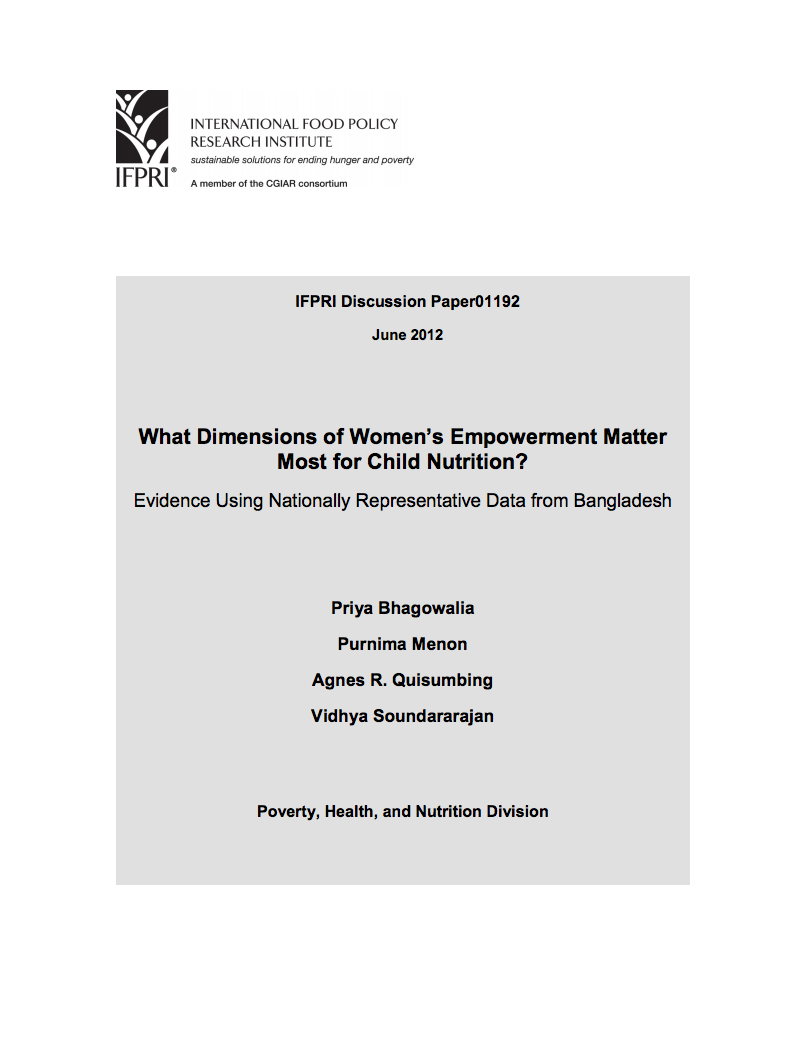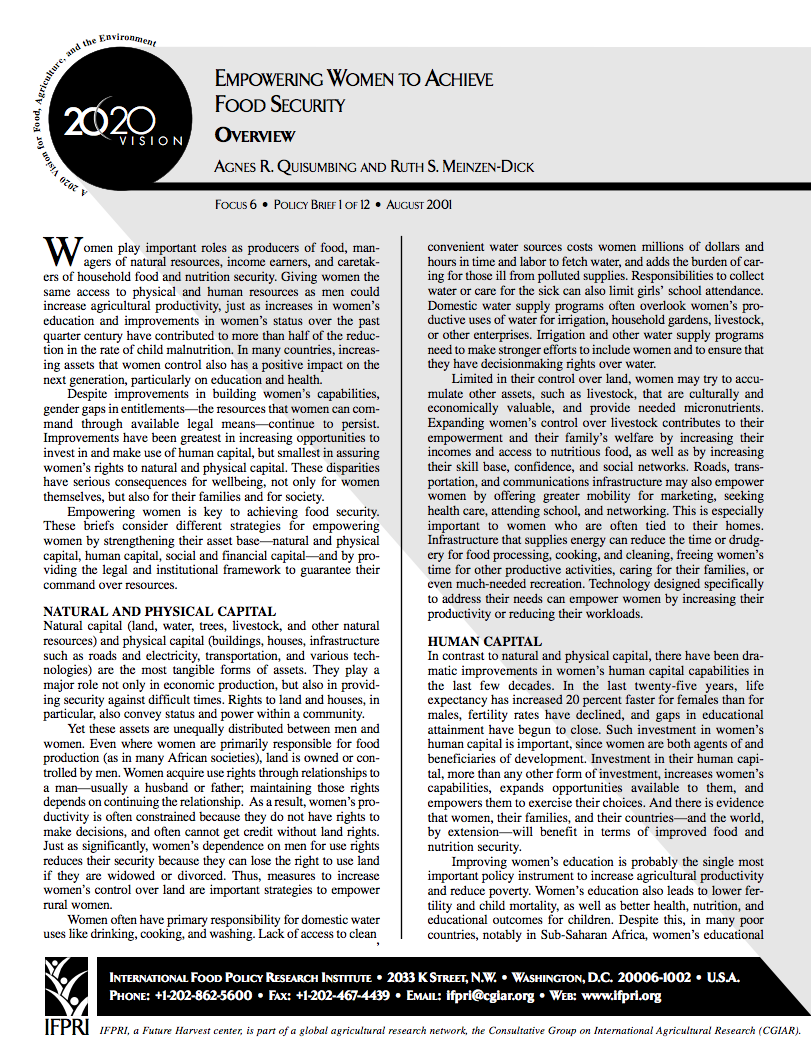What Dimensions of Women’s Empowerment Matter Most for Child Nutrition?
We use data from the 2007 Bangladesh Demographic and Health Survey to examine the relationship between women’s status and nutrition in Bangladesh using indicators of empowerment such as mobility, decisionmaking power, and attitudes toward verbal and physical abuse. We also examine the role of variables reflecting maternal education and height, in relation to child nutrition. All models control for age and sex of the child, household wealth, and region.






